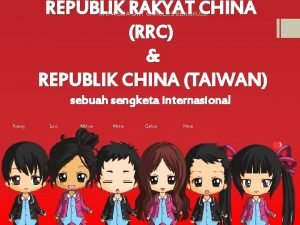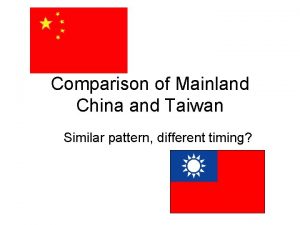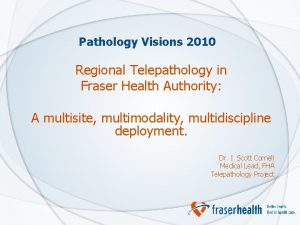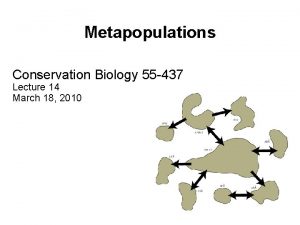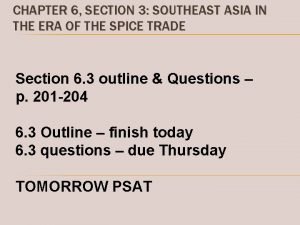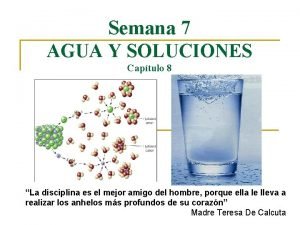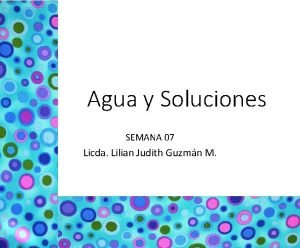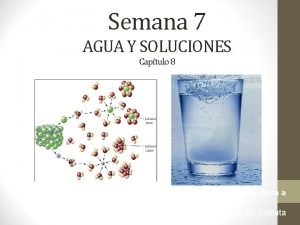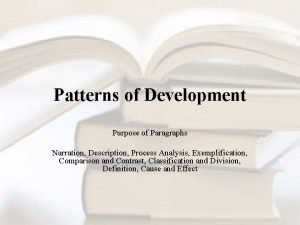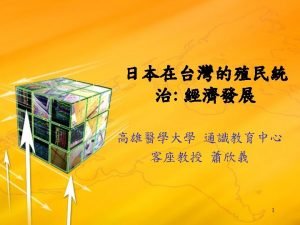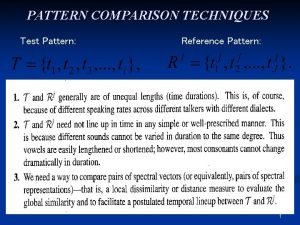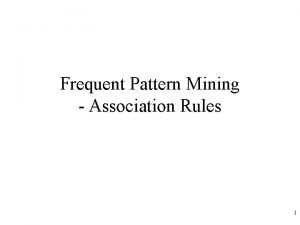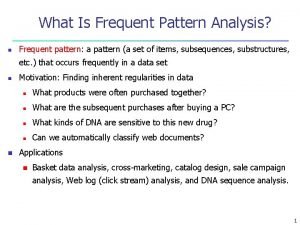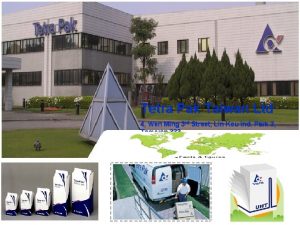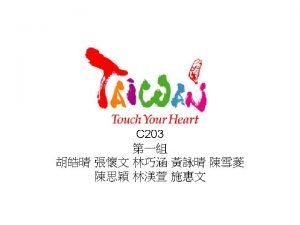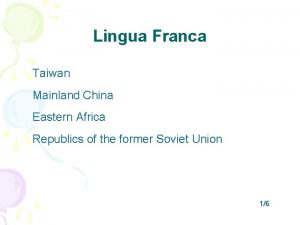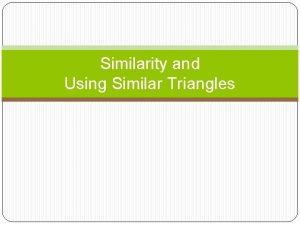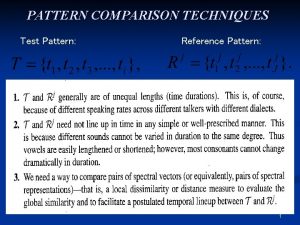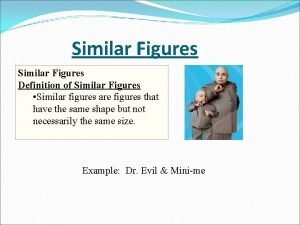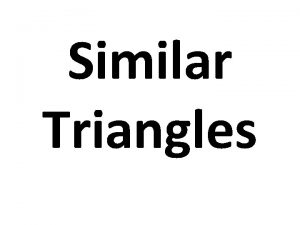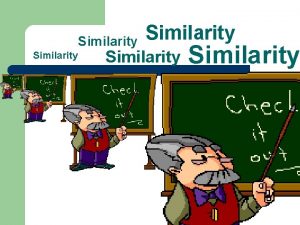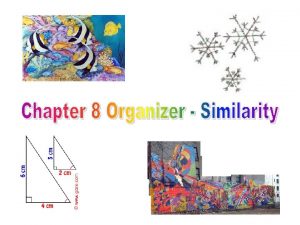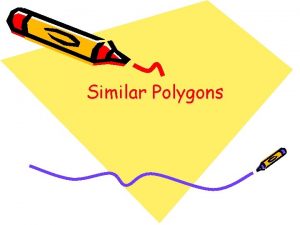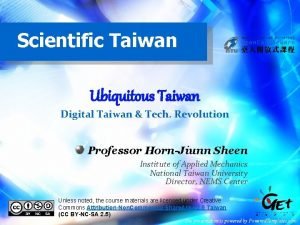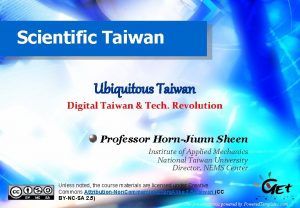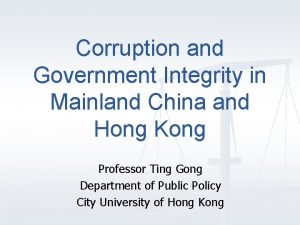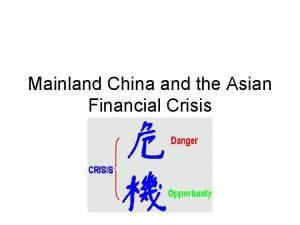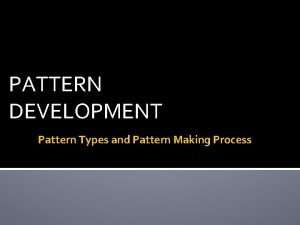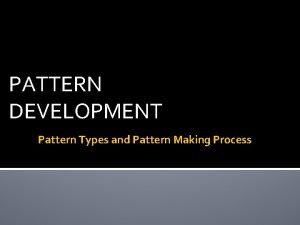Comparison of Mainland China and Taiwan Similar pattern






















- Slides: 22

Comparison of Mainland China and Taiwan Similar pattern, different timing?

Comparison • Land area – Mainland China ≈ U. S. – Taiwan < 1/3 Tennessee – 267 times bigger • population – mainland: 1. 38 billion – Taiwan ≈ Shanghai – 59 times bigger

Political similarities • Chinese Communist Party (CCP) – Marxism-Leninism and Mao Zedong Thought – “Deng Xiaoping Theory” – “Three Represents” • Nationalist Party (KMT or GMD) – the “three principles of the people” • both CCP & KMT borrowed party-building principles from Soviet Union in 1920 s

Political similarities • Leninist party-state in mainland Taiwan – political liberalization in Taiwan since 1980 s • organizational principles of party-state – party as the guardian of the people – strict party hierarchy and discipline • no organized opposition to party leadership is allowed

Comparison • GDP (nominal or P. P. P. ) – Mainland 20 times bigger • Per capita GDP – Taiwan 3 times bigger – Taiwan = Australia (P. P. P. ) • Exports or Imports – Mainland 6+ times bigger – Taiwan > Russia

Time-lagged development • Land reform – Taiwan (1950 s) and mainland (1970 s) • economic takeoff – Taiwan (1950 s- ) and mainland (1980 s- ) • tariff rebates – Taiwan (1950 s- ) and mainland (1980 s- ) • special economic zones – Taiwan (1960 s- ) and mainland (1980 s- )

Time-lagged development • Promotion of small and medium size enterprises – Taiwan (1960 s- ) and mainland (1980 s- ) • depreciation of currency exchange rate • differences – decentralization in mainland (1980 s- ) – foreign direct investment in mainland (1980 s- ) • significantly contributed to export upgrading • technology-oriented selection criteria (1995 - )






Export dynamics • Continuous upgrading in the structure of exports – inclusion of more sophisticated commodities – development of new markets – growth in export volume • structural changes cause the growth in export volume

Evidence from Taiwan

Taiwan’s export upgrading • 1940 s: agricultural exports – import manufactured consumer goods • 1950 s: import substitution growth – export of processed agricultural commodities – import decreasing share of manufactured consumer goods • 1960 s: export diversification growth – export of processed agricultural and industrial commodities

Taiwan’s export upgrading • 1960 s: export diversification growth – import food, manufactured consumer goods and producer goods • 1970 s: import & export substitution growth – increasingly sophisticated commodities • after 1986 – exports of labor-intensive goods decrease – exports of hi-tech products increase

Evidence from mainland

Mainland’s export upgrading • Before 1978: – emphasis on self-reliance and inward-looking – trade based on self-sufficiency • 1978 -1985 – increased exports of petroleum & raw materials • 1985 -1995: “export substitution” growth – export of labor-intensive manufactured consumer commodities

Mainland’s export upgrading • after 1995: further diversification – attempt to export more sophisticated commodities • exports of hi-tech product – total US$661 billion in 2014 – 28% of total exports from mainland – 73% are exported by foreign-invested enterprises – less innovation-driven than in Taiwan


Market share development • Flying-geese model – more advanced economies lose comparative advantages in labor-intensive industries – movement of industries through foreign direct investment – does not seem to hold true for manufactured commodities that require • high research and development (R&D) expenditure • rapid product and process innovation

Export of office machinery • Can’t be explained by flying-geese model • Taiwan became major developer, producer, and exporter • special case – 1 category – 8 years
 Peta china taiwan hongkong dan macau
Peta china taiwan hongkong dan macau Taiwan size comparison
Taiwan size comparison Mainland asia
Mainland asia Lower mainland and fraser valley health region map
Lower mainland and fraser valley health region map Mainland island metapopulation
Mainland island metapopulation In 1500 mainland southeast asia was a relatively
In 1500 mainland southeast asia was a relatively Direct comparison vs limit comparison
Direct comparison vs limit comparison Similar disuelve a similar
Similar disuelve a similar Unidad de medida de solubilidad
Unidad de medida de solubilidad Lo similar disuelve lo similar
Lo similar disuelve lo similar Members of an avian species of identical plumage congregate
Members of an avian species of identical plumage congregate Example of classification in patterns of development
Example of classification in patterns of development 8 patterns of development in writing
8 patterns of development in writing Colonialism and development: korea, taiwan, and kwantung
Colonialism and development: korea, taiwan, and kwantung Pattern comparison
Pattern comparison Afis fingerprint
Afis fingerprint Pattern and pattern classes in image processing
Pattern and pattern classes in image processing Frequent pattern
Frequent pattern Frequent pattern
Frequent pattern Unit 8 natural disasters
Unit 8 natural disasters Taiwan drama ptt
Taiwan drama ptt Yekpan
Yekpan Hello my name is sussi
Hello my name is sussi
